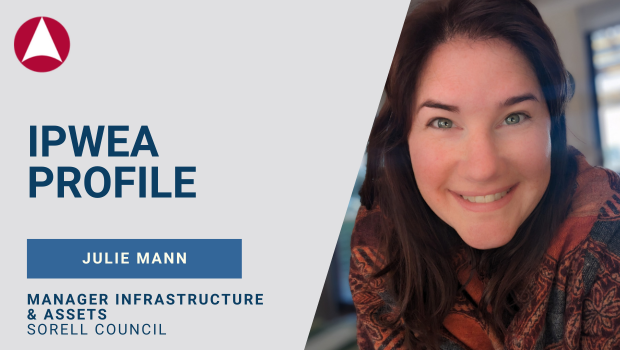Julie Mann has lived in the vibrant, rural town of Sorell in Tasmania for 15 years.
A 25-minute drive from Hobart, Sorell is one of the fastest growing municipalities in the state with a population of just over 15,000. But like much of Tasmania, it is growing rapidly. An influx of inhabitants – both new and returning – are moving across from the mainland, and it’s no surprise that one of the biggest issues facing the area is housing and the public infrastructure which comes with an increasing population.
Mann isn’t simply a resident of Sorell. As Sorell Council’s newly appointed manager of infrastructure and assets she has an opportunity and a responsibility to address the region’s challenges. She oversees more than $410 million worth of infrastructure asses, and increasingly relies on Geographic Information Systems (GIS) and spatial analysis systems to help her in her role.
“GIS is basically like an informative, spatial way of looking at all your assets and key attribute information,” Mann explains. “For example, all of our roads, our curb and gutter, our footpaths, our storm water, our parks and play equipment, trees – they’ve all been accurately recorded on GPS, like an internal Google. It’s much easier to visualise on a map.
“Plus, one of our biggest wins is that our field staff can readily access corporate information systems via this spatial portal.”
Born and educated in Canada, Mann originally acquired a BSc. in Marine Biology from Dalhousie University in Nova Scotia but her passion now lies with GIS and asset management. Before being appointed manager of infrastructure and assets, she spent more than seven years managing GIS for the Sorell Council in a number of different roles.
Last year, Mann completed the IPWEA Integrating Asset Management & Governance course, after completing the IPWEA Professional Certificate in Asset Management Planning course a few years ago. Knowing she would be writing all the asset management plans for the council, including the ICT strategy and update, the asset management strategy and the asset management policy update, she knew the course would be of benefit.
“It went into detail about an asset management plan, a strategy and a policy, and how to make good, usable documents for your organisation,” she says.
“It touched on all the moving parts of an organisation and how much you really need to think about that: that integration with people and departments to get the best outcome.”
Since completing the Integrating Asset Management & Governance course, Mann says she finds it easier to look at the council as a whole, rather than the sum of its parts.
“I’m definitely in a place where I’m looking at the organisation a little bit more holistically and from a governance perspective too,” she says.
“Before, I didn’t necessarily get too involved with the other departments; it was a little bit more tunnel vision. Whereas right now I feel like I’ve got much broader experience with council, how it functions and our strategy.”
One of the current conversations at Sorell Council is how to do more for the community with existing resources.
“The community is growing, our assets are growing, we’ve got new infrastructure such as a brand new stadium,” says Mann.
“And as we grow, the resources of the council are not necessarily growing. So there are challenges in that. It’s a really interesting conversation about how councils are going to address that.
“You have to really think about your strategy and the way you are going to renew all of your assets and stay sustainable. It’s about, how can we extend the life of our current assets and get the best bang for our buck while still meeting the community’s expectations?”
Aside from the housing crisis, there are environmental challenges brought on by climate change in the form of warmer climates, flooding and drought. Dealing with these bring cost challenges, which can be acute for a small council.
“We still have to deliver a service without breaking the bank, so to speak. You have to be business savvy, strategically prioritising expenditure and optimising Council’s Capital programs over time.
“It’s necessary to have all the information and understand your asset life cycles when considering trade-offs on prioritisation or levels of service decisions, especially under budget constraints.”
Mann says there is often a lack of understanding between long term financial planning and the establishment and management of community levels of service and future demands.
“Marrying the two becomes important, particularly for councils and especially with such a growing residential community,” she explains.
As the demographics change, so too does the future demands on Council and that’s what good asset management aims to address.














